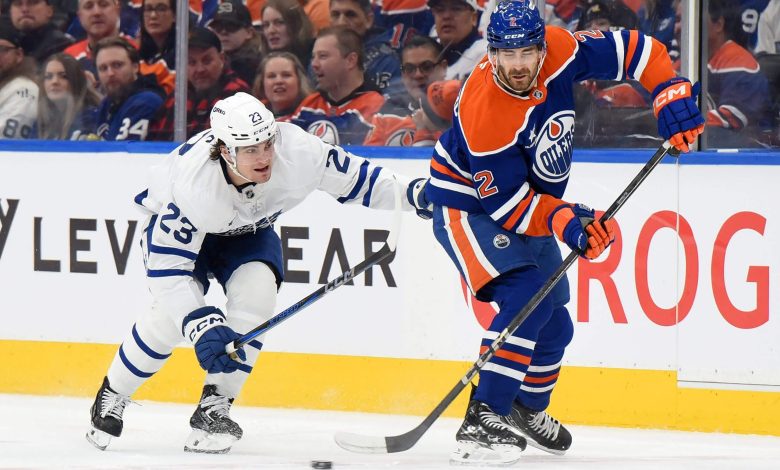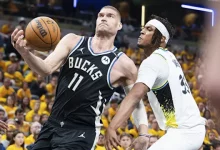NHL executives and agents discuss why there may be a boom this offseason in “The Summer of Offer Sheets.”

As the NHL enters what is expected to be an eventful offseason, one major topic of discussion has emerged: the potential for a surge in offer sheets. Traditionally a rare occurrence in the league, offer sheets—the formal contract offers made by one team to a restricted free agent (RFA) from another team—are being discussed as a significant possibility this year. Several factors have come together to suggest that 2025 could indeed be the “Summer of Offer Sheets,” with multiple executives, agents, and insiders weighing in on why this particular offseason might see a departure from the norm.
Offer sheets are a tool that NHL teams can use to acquire restricted free agents (RFAs), but they come with substantial risks. The team that offers an RFA a contract can potentially have to give up significant compensation if the player’s current team chooses not to match the offer. While offer sheets are not commonly used—due to the delicate balance of team dynamics, the fear of creating animosity, and the threat of losing future draft picks—this summer could change the narrative. Let’s break down why a combination of salary cap constraints, rising player values, and an increase in strategic maneuvering by general managers (GMs) might make this a pivotal year for offer sheets.
The Basics of an Offer Sheet
Before diving into the reasons why this offseason could be different, it’s important to briefly understand how offer sheets work in the NHL.
An offer sheet is an offer made by one team to a restricted free agent (RFA) who is under contract with another team. RFAs have arbitration rights, and if a player doesn’t receive a qualifying offer or agree to a new contract with their current team, another team can step in and make an offer sheet. The team that currently holds the player’s rights has seven days to match the offer, or they can accept compensation in the form of draft picks.
The draft pick compensation depends on the salary level of the contract. For example, if an RFA signs a contract worth more than $10.5 million annually, the compensation can be four first-round picks. This can discourage teams from using offer sheets unless they are highly confident in the player’s value. However, the compensation structure often influences how much risk teams are willing to take on.
Given the stakes involved in the compensation system and the potential for disrupting team dynamics, offer sheets are relatively rare, but this summer, the NHL could witness a wave of them.
The Factors Driving the Potential for a Boom in Offer Sheets
There are several key reasons why 2025 could be the “Summer of Offer Sheets.” NHL executives, agents, and insiders have pointed to various trends and circumstances that make this year different from previous seasons.
1. The Impact of the Salary Cap
The NHL’s salary cap has long been a significant factor in the offseason landscape, and this year, it is especially noteworthy. The salary cap, which has remained relatively stagnant in recent years due to the financial strain caused by the COVID-19 pandemic, is projected to rise for the 2025-2026 season. While the cap has crept up modestly in previous seasons, this offseason will see an anticipated increase that will allow teams to have more flexibility in their cap space.
With more cap room available, some teams may choose to engage in offer sheets as a way to acquire talent without significantly impacting their own roster. Historically, offer sheets have been rare because many teams have struggled to balance their books. However, with some teams having ample cap space heading into the summer, this financial freedom could incentivize GMs to be more aggressive in signing RFAs away from other clubs.
At the same time, some contending teams that are tight against the cap may see an opportunity to target RFAs on teams that are struggling to re-sign their own players. These teams might use offer sheets to target a player they feel would be a difference-maker for their squad while forcing another team to sacrifice future assets to retain the player.
2. The Rising Value of Restricted Free Agents
Another significant factor driving the potential for a boom in offer sheets is the increasing value of restricted free agents, particularly those who are emerging as key players for their teams. The market for RFAs has evolved in recent years, as top RFAs have become high-profile, highly sought-after talents who can make an immediate impact on any roster.
In past years, many RFAs were seen as either players who hadn’t yet fully developed or who were viewed as “middle-tier” talents. However, with the emergence of more highly skilled and younger players entering the league, RFAs are now viewed as key players with the potential to make a difference on a contending team. Players like Kirill Kaprizov, Brady Tkachuk, and others have demonstrated that a well-chosen RFA can provide instant value.
As teams look to build championship-caliber rosters, the demand for top-tier RFAs has never been higher. This could lead to more offer sheets as general managers seek to add talented players who can help propel their teams into the next tier of competition. Additionally, several top RFAs will be coming up this summer, and the uncertainty around their futures could spark aggressive moves.
3. Team Dynamics and GM Aggression
NHL general managers are becoming more willing to take calculated risks, and this season could be a watershed moment for offer sheets. In recent years, the trend has been for GMs to become more aggressive and creative in acquiring talent. With the growing influence of analytics and the increasing desire to outmaneuver competitors, executives are more willing to take on the challenge of offering a contract to an RFA.
Many GMs are looking for ways to bypass the traditional route of negotiating with their own restricted free agents, especially in cases where they feel a player’s asking price is unreasonable or when the team is unwilling to commit to a long-term deal. In some cases, the team that currently holds the RFA’s rights may be hamstrung by cap space, roster spots, or internal roster construction issues that limit their ability to keep the player. This is where the opportunity for an offer sheet arises.
This season, a combination of aggressive GMs and a market ripe with talent will create a perfect storm for more offer sheets to be extended. Whether it’s a team looking to add a crucial piece to a playoff-contending roster or an executive hoping to poach a young star from a cap-strapped team, the stage is set for increased offer sheet activity.
4. Star Players on the RFA Market
Several high-profile RFAs are expected to be available this summer, and their potential to be poached by rival teams could contribute to an increase in offer sheets. Players like Matthew Tkachuk (Florida Panthers), Timo Meier (San Jose Sharks), and Juuse Saros (Nashville Predators), among others, are all expected to enter RFA status, and their future with their current teams is uncertain.
These players have the potential to reshape the trajectory of a franchise and would be highly coveted by other teams. Tkachuk, known for his leadership, physical play, and scoring ability, could be a perfect fit for a team in need of a dynamic power forward. Meier, a skilled winger with a nose for the net, could give an offensively challenged team the firepower it needs. Meanwhile, Saros, one of the league’s top goaltenders, would be an immediate upgrade for any team looking to solidify their crease.
The availability of such high-caliber RFAs gives teams an incentive to step into the offer sheet process, as it may be easier to acquire these players via offer sheet than to try to negotiate a trade with their current teams.
5. The Influence of Recent Offer Sheets
While offer sheets are still rare, they have become more common in recent years. The most notable example is Sebastian Aho’s offer sheet in 2019, when the Montreal Canadiens signed the Carolina Hurricanes forward to a five-year, $42.27 million contract. The Hurricanes matched the offer, but the move reignited interest in offer sheets as a legitimate tool for NHL teams. Other recent offer sheets, such as those for Dustin Penner (2007) and Ryan O’Reilly (2015), have also shown that teams are willing to take a gamble on RFAs.
These examples have set a precedent and demonstrated that offer sheets can be effective when used strategically. This could embolden more GMs to pursue similar moves, knowing that the NHL is not entirely opposed to such maneuvers.
The Role of Agents in the Offer Sheet Process
Agents will also play a crucial role in this offseason’s offer sheet dynamics. Many agents are keenly aware of the current market dynamics and are likely to push for offer sheets if they believe it is in the best interest of their clients. For agents representing players who may be undervalued or are negotiating with teams that are unwilling to meet their asking price, an offer sheet could serve as a way to force the hand of a team and maximize the value of their client.
For example, if an agent represents a young player whose current team is struggling to make room under the cap, the agent may view an offer sheet as a way to secure a more lucrative contract for their client. Agents are also well aware that the right offer sheet could provide their player with a path to a bigger role, a better team, or a more favorable long-term contract.









